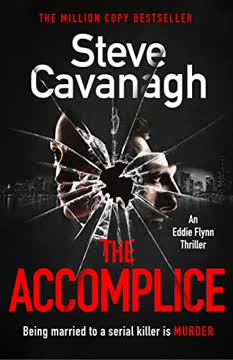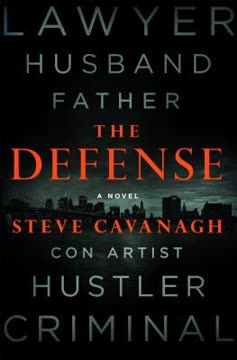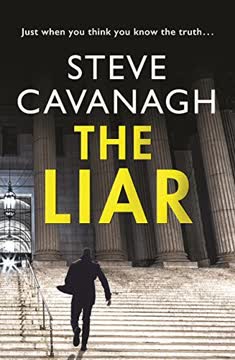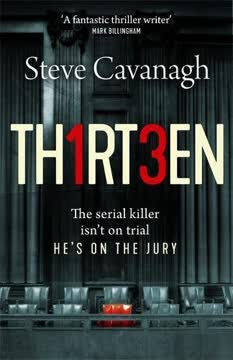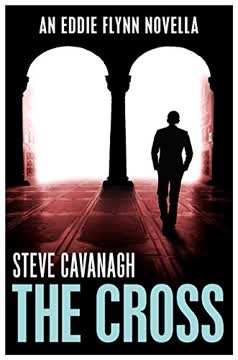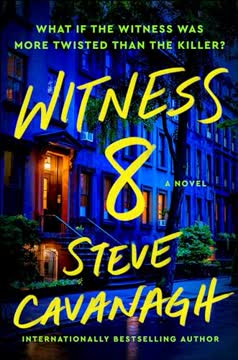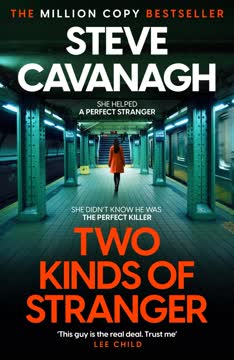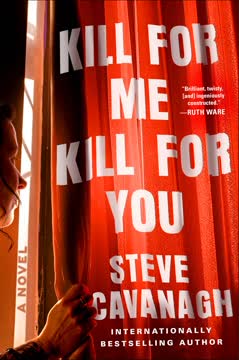Plot Summary
Night Raid and Revelation
The novel opens with a high-stakes FBI raid led by Special Agent Paige Delaney on the home of Daniel Miller, suspected to be the infamous serial killer known as the Sandman. The Sandman has terrorized New York for over a year, leaving a trail of mutilated victims with sand in their wounds and missing eyes. The raid, meticulously planned, is the culmination of months of investigation, but Daniel is gone. Instead, the agents find his wife, Carrie Miller, in shock, and a trove of jewelry belonging to the victims hidden in her closet. A bloodstained blouse and a mysterious van are missing. The media explodes with the news, and soon Carrie is arrested as an accomplice, accused of aiding her husband's gruesome crimes. The city is gripped by fear and outrage, and the question lingers: how could a wife not know she was married to a monster?
The Sandman's Signature
The Sandman's murders are marked by ritualistic brutality: after killing, he fills the victims' wounds, mouths, and empty eye sockets with sand, and always takes their eyes as trophies. He also steals a personal item from each victim, usually jewelry. The killings began on Coney Island beach but shifted to private homes as police pressure increased. The Sandman's ability to evade capture, his taunting letters to the FBI, and his eerie references to fairytales and the Sandman legend create a citywide atmosphere of dread. The psychological impact on the public and law enforcement is profound, as the killer seems both omnipresent and untouchable.
Carrie Under Siege
Carrie Miller, once a struggling actress turned wealthy wife, is thrust into the national spotlight as the "most evil woman in America." The prosecution claims she knowingly aided her husband's murders, citing the jewelry in her possession and her failure to alert authorities. Carrie's life unravels: friends abandon her, protestors gather outside her home, and the media vilifies her. She insists on her innocence, claiming she only ever suspected, never knew, the truth about Daniel. Her defense is complicated by a prenuptial agreement that would strip her of millions if she accused Daniel without proof. The psychological toll is immense, and Carrie is left isolated, traumatized, and desperate for someone to believe her.
The Defense Assembles
Eddie Flynn, a street-smart, principled defense attorney, is reluctantly drawn into Carrie's case. His team—investigator Bloch, partner Kate Brooks, and mentor Harry Ford—debate the risks and ethics of defending someone accused of such heinous crimes. Eddie's rule is to only defend those he believes are innocent, and after meeting Carrie, he senses her pain and guilt but also her sincerity. The team faces enormous pressure: the Sandman is still at large, the evidence against Carrie is damning, and the public wants a conviction. Yet, Eddie is compelled by a sense of justice and the belief that Carrie is another victim, not an accomplice.
A Killer's Mind Unveiled
The narrative delves into the Sandman's psyche. He is a master of compartmentalization, living a double life as a successful financier and a remorseless killer. His fascination with eyes, sand, and sleep is rooted in childhood obsessions with fairytales and the Sandman myth. He views his killings as a form of release for his victims, and his trophies—eyes and jewelry—are tokens of power. The Sandman's love for Carrie is genuine in his own twisted way; he sees her as the only person who makes him feel normal, and he is willing to kill to protect her. His return to New York and renewed violence are triggered by Carrie's impending trial.
The Trap at Grady's Inn
The FBI finally gets a break when the Sandman uses his credit card at a seedy hotel, Grady's Inn. Delaney and her team swarm the location, only to find a gruesome surprise: a ticking bag left by the Sandman, which turns out to contain the severed head of a key witness, Chester Morris, filled with sand and deathwatch beetles. The Sandman's message is clear—he is always one step ahead, and he will kill anyone who threatens Carrie. The psychological warfare escalates as Delaney herself is abducted and murdered, her eyes taken, and her body left as a taunt to law enforcement.
Witnesses Silenced
As the trial approaches, witnesses who could tie Carrie to the murders are systematically killed. The Sandman targets anyone who might testify against her, including Teresa Vasquez, who is gunned down despite FBI protection. The defense team realizes the killer is manipulating the trial from the shadows, and the prosecution's case is weakened as key testimonies are lost. The city's fear intensifies, and the sense of the Sandman's omnipotence grows. The defense, meanwhile, races to uncover the truth behind the killings and the connections between the victims, Carrie, and the Sandman.
The Vanishing of Carrie
On the eve of her trial, Carrie vanishes. The court revokes her bail, and the prosecution moves to try her in absentia. Eddie and his team are left scrambling, suspecting either suicide, abduction by the Sandman, or that Carrie has gone on the run out of fear. The defense's case is crippled without her testimony, and the public assumes her guilt. Meanwhile, the Sandman's threats escalate: he kidnaps Kate Brooks, Eddie's partner, and issues an ultimatum—if Carrie is convicted, Kate dies. The stakes become personal, and Eddie is forced into a desperate gambit to save both women.
The Hunt for Truth
Bloch and Gabriel Lake, a brilliant but troubled former FBI profiler, join forces to track the Sandman. Their investigation leads them through the city's underbelly, piecing together the killer's methods, psychological profile, and connections to the victims. They discover a hidden freezer in a warehouse, containing a dismembered body—Daniel Miller, dead long before the recent murders. This revelation upends the entire case: if Daniel is dead, someone else is the Sandman. The team races to connect the dots, suspecting a frame-up and a deeper conspiracy.
The Freezer and the Past
The discovery of Daniel Miller's frozen corpse, missing a thumb, reveals that he was framed posthumously for the Sandman's crimes. The real killer used Daniel's body to plant evidence at crime scenes, including a thumbprint on a victim. The defense uncovers that Otto Peltier, Carrie's lawyer and secret lover, orchestrated the frame-up, manipulated Carrie, and continued the killings to protect her and himself. Otto's obsession with Carrie and his jealousy of Daniel drove him to murder, and he exploited Carrie's trauma to control her. The truth about the jewelry, the false alibi, and the Sandman's continued violence comes to light.
The Courtroom Chess Match
In a dramatic courtroom showdown, Eddie dismantles the prosecution's case. He reveals the forensic flaws, the unreliability of eyewitnesses, and the manipulation of evidence. Carrie's journals, initially used to incriminate her, become a tool for her defense as Eddie exposes the lies and omissions orchestrated by Otto. The revelation that Daniel was dead before the recent murders, and that Otto had both motive and opportunity, turns the trial on its head. Otto is confronted, his DNA links him to the crimes, and his emotional unraveling in court seals his fate. The charges against Carrie are dropped, and the real Sandman is unmasked.
The Real Accomplice
Otto Peltier's double life is revealed: a respected lawyer by day, a manipulative, obsessive killer by night. His love for Carrie is possessive and destructive; he frames Daniel, kills to protect his secret, and ultimately kidnaps and attempts to murder Kate. In a final confrontation at his hideout, Otto tries to burn Kate alive, but is stopped by Bloch, Lake, and the FBI. Kate survives, and Otto is killed in the ensuing struggle. The full extent of his crimes and his psychological manipulation of Carrie are exposed, bringing closure to the case and vindication for the defense team.
The Final Confrontation
The climax unfolds in a derelict bus depot, where Otto (the Sandman) prepares to kill Kate. Bloch and Lake arrive in time, rescuing her and confronting Otto. In a tense standoff, Kate resists the urge for revenge, and Lake ultimately kills Otto, ending the Sandman's reign of terror. The FBI arrives, and the evidence—trophies, journals, and forensic links—confirms Otto's guilt. The survivors are left to process the trauma, and the city begins to heal. Carrie is exonerated, but the scars of manipulation and violence remain.
Aftermath and Unmasking
With Otto dead and the truth revealed, the legal system and media scramble to correct their mistakes. The FBI apologizes for misidentifying Daniel Miller, and Carrie is released. Yet, the story's final twist is that Carrie herself was not entirely innocent: she manipulated events, played the victim, and escaped justice with a fortune. Lake, haunted by the knowledge, vows to one day find her and deliver his own form of justice. The survivors—Eddie, Kate, Bloch, and Harry—reunite, changed but resilient, and reflect on the cost of truth and the complexity of evil.
The Survivor's Song
The novel closes with the survivors gathering in an Irish bar, sharing drinks and memories. Kate, scarred but healing, is determined to reclaim her life. Bloch and Lake, both marked by violence and loss, find solace in friendship and purpose. Eddie, ever the con artist turned crusader, contemplates the blurred lines between right and wrong. Carrie, now free and wealthy, flies to a new life, her true nature hidden beneath layers of performance. The Sandman's legacy lingers, but hope and justice endure.
Characters
Eddie Flynn
Eddie is a former con artist turned defense attorney, known for his street smarts, quick thinking, and deep sense of justice. He is haunted by past mistakes and the fear of freeing the guilty, which makes him cautious about the cases he takes. Eddie's relationships—with his team, his estranged family, and his clients—are marked by loyalty and empathy. Throughout the novel, he is driven by a need to help the innocent and protect those he cares about, even at great personal risk. His psychological insight and ability to read people are crucial in unraveling the Sandman's web.
Carrie Miller
Carrie is at the center of the storm: a woman accused of being a serial killer's accomplice, yet also a victim of manipulation and betrayal. Her background as a struggling actress, her rapid ascent to wealth, and her isolation set the stage for her vulnerability. Carrie's psychological journey is one of trauma, guilt, and survival. She is both deeply wounded and cunning, capable of playing the victim while hiding her own secrets. Her relationship with Daniel is marked by love and fear, while her entanglement with Otto reveals her capacity for both trust and deception. In the end, Carrie's true nature remains ambiguous, leaving others to question how well anyone can know another person.
Otto Peltier (The Sandman)
Otto is the novel's ultimate villain: a respected attorney who leads a double life as the Sandman. His obsession with Carrie drives him to frame Daniel, commit multiple murders, and manipulate the legal system. Otto's intelligence, charm, and ruthlessness make him a formidable adversary. Psychologically, he is a classic narcissist with a capacity for compartmentalization and a need for control. His love for Carrie is possessive and destructive, and his downfall is precipitated by his inability to let go. Otto's unraveling in court and his final, desperate acts reveal the depths of his pathology.
Kate Brooks
Kate is Eddie's law partner and a survivor of workplace harassment, which fuels her passion for defending women and the vulnerable. She is intelligent, determined, and empathetic, but also carries the scars of trauma. Kate's abduction and ordeal at the hands of the Sandman test her strength and resolve. Her friendship with Bloch and her role in the defense team highlight her loyalty and courage. Kate's psychological arc is one of reclaiming agency and refusing to be defined by victimhood.
Melissa Bloch
Bloch is the team's investigator, known for her toughness, resourcefulness, and unflinching loyalty. She is emotionally reserved but deeply cares for her friends, especially Kate. Bloch's background in law enforcement and her willingness to bend rules make her indispensable. Her psychological resilience is tested by the violence and loss she witnesses, but she remains a stabilizing force. Bloch's partnership with Lake and her role in rescuing Kate underscore her commitment to justice and friendship.
Gabriel Lake
Lake is a former FBI profiler, brilliant but damaged by past trauma and institutional betrayal. He is socially awkward, obsessive, and driven by a need to catch killers. Lake's insights into the Sandman's mind are crucial to the investigation, but his methods and motives are sometimes questionable. He is haunted by guilt and a sense of alienation, and his final vow to hunt down Carrie reveals his uncompromising sense of right and wrong. Lake's psychological complexity adds depth to the novel's exploration of justice and revenge.
Harry Ford
Harry is a retired judge and Eddie's mentor, providing wisdom, perspective, and emotional support. He is pragmatic, compassionate, and unafraid to challenge Eddie when necessary. Harry's presence grounds the team, and his experience in the legal system is invaluable. He represents the old guard of justice, tempered by empathy and a sense of duty.
Paige Delaney
Delaney is the FBI agent who leads the initial investigation into the Sandman. She is intelligent, methodical, and deeply committed to justice. Her murder by the Sandman is a turning point in the novel, symbolizing the vulnerability of even the most capable and dedicated. Delaney's psychological profile reflects the toll of hunting monsters and the personal cost of obsession.
Daniel Miller
Daniel is initially believed to be the Sandman, but is ultimately revealed to be a victim—murdered and used as a scapegoat by Otto. His relationship with Carrie is complex, marked by love, betrayal, and manipulation. Daniel's fate underscores the novel's themes of deception, identity, and the dangers of appearances.
The Sandman's Victims
The victims—Margaret Sharpe, Penny Jones, Suzanna Abrams, Lilian Parker, the Nielsens, and others—are more than plot devices; their stories and the impact of their deaths drive the investigation and the emotional stakes. Their personal items, relationships, and the trauma inflicted on their families humanize the cost of violence and the need for justice.
Plot Devices
Dual Identities and Unreliable Narration
The novel masterfully employs dual identities—Otto as the Sandman, Carrie as both victim and manipulator, Daniel as red herring—and unreliable narration through journals, confessions, and courtroom testimony. The reader is constantly challenged to question appearances and motives, mirroring the characters' own doubts. The use of Carrie's journals as both evidence and misdirection is a key device, as is the gradual revelation of the true killer's identity.
Courtroom Drama and Legal Strategy
The legal thriller format is used to maximum effect, with the courtroom serving as a battleground for truth, manipulation, and performance. Cross-examinations, surprise evidence, and legal maneuvers drive the plot and allow for psychological duels between characters. The shifting power dynamics in court reflect the larger battle between justice and deception.
Psychological Profiling and Mind Games
The pursuit of the Sandman is driven by psychological profiling, both by law enforcement and by the killer himself. The novel explores the limitations and dangers of profiling, the ways in which killers manipulate perceptions, and the psychological toll on those who hunt them. Mind games, both literal and metaphorical, are central to the plot's twists and reversals.
Foreshadowing and Red Herrings
The narrative is rich with foreshadowing—references to fairytales, the Sandman myth, and the symbolism of eyes and sand. Red herrings abound, from Daniel's apparent guilt to Carrie's ambiguous role, keeping both characters and readers off-balance. The ultimate reveal of Otto as the Sandman is seeded through subtle clues and misdirection.
Thematic Motifs: Sleep, Eyes, and Sand
The motifs of sleep, eyes, and sand recur throughout the novel, symbolizing vulnerability, perception, and the boundary between life and death. The Sandman's rituals, the victims' missing eyes, and the references to fairytales create a haunting atmosphere and reinforce the novel's exploration of innocence lost and the darkness within.
Analysis
The Accomplice is a masterclass in psychological suspense and courtroom drama, using the framework of a serial killer investigation to explore deeper questions about identity, complicity, and the nature of evil. Steve Cavanagh crafts a narrative where no one is entirely innocent, and the lines between victim, accomplice, and perpetrator are blurred by manipulation, trauma, and self-preservation. The novel critiques the media's rush to judgment, the limitations of the justice system, and the dangers of relying on appearances. Through its complex characters—especially the enigmatic Carrie and the obsessive Otto—it asks how well we can ever know those closest to us, and whether justice is ever truly served. The story's final twist, with Carrie escaping justice and Lake vowing to hunt her, leaves readers unsettled, reminding us that evil often hides in plain sight, and that survival sometimes requires its own kind of ruthlessness. The Accomplice is both a gripping thriller and a meditation on the cost of truth in a world built on secrets and lies.
Last updated:
FAQ
Synopsis & Basic Details
What is The Accomplice about?
- A Lawyer's Moral Dilemma: The Accomplice plunges readers into the high-stakes world of defense attorney Eddie Flynn, who takes on the seemingly impossible case of Carrie Miller, wife of the notorious serial killer "The Sandman," accused of being his accomplice. The novel explores Eddie's internal conflict as he defends a client the entire city believes is guilty, while the real killer remains at large.
- Unmasking a Master Manipulator: The core narrative revolves around the relentless pursuit of truth, as Eddie and his team uncover layers of deception, revealing that Carrie is not merely a victim or an accomplice, but a complex figure caught in a web of manipulation orchestrated by someone far closer than imagined. This quest for truth leads to shocking revelations about the Sandman's true identity and motives.
- A Battle for Justice and Survival: Beyond the courtroom drama, the story is a gripping psychological thriller, featuring a deadly game of cat and mouse between the defense team and the elusive killer. Personal stakes escalate dramatically when Eddie's partner, Kate Brooks, is abducted, forcing Eddie to gamble everything to save her and expose the real accomplice before it's too late.
Why should I read The Accomplice?
- Twist-Filled Legal Thriller: Readers seeking a legal thriller with relentless pacing and shocking twists will find The Accomplice a compelling read. Steve Cavanagh is praised for his "ingeniously constructed puzzle" and "high-concept twist," keeping readers guessing until the very end.
- Deep Psychological Exploration: The novel delves into the complex psychologies of its characters, from the chilling duality of the serial killer to the nuanced motivations of the accused wife and the haunted determination of the legal team. It offers a profound look at trauma, manipulation, and the masks people wear.
- Ethical Dilemmas Explored: The Accomplice challenges perceptions of justice, complicity, and innocence. It forces readers to confront uncomfortable questions about how well we truly know others and the blurred lines between victimhood and culpability, making it a thought-provoking experience.
What is the background of The Accomplice?
- Contemporary New York Setting: The story is set in a post-pandemic New York City, grappling with the lingering fear of a serial killer. This urban backdrop, with its distinct neighborhoods from affluent Old Westbury to gritty Tribeca and industrial Bayonne, adds a layer of realism and atmosphere to the high-stakes investigation.
- Critique of the Justice System: Steve Cavanagh, a former civil rights lawyer, infuses the narrative with a critical perspective on the legal system. The novel highlights issues like media sensationalism, the pressure on law enforcement to secure convictions, the fallibility of forensic science, and the ethical compromises lawyers face, drawing on real-world legal complexities.
- Intertextual Fairytale Allusions: The Sandman's identity and methods are deeply rooted in the "Ole Luk-Oie" fairytale by Hans Christian Andersen, referenced in the epigraph. This mythological background adds a chilling, almost supernatural layer to the killer's ritualistic crimes, connecting them to ancient tales of sleep, dreams, and death.
What are the most memorable quotes in The Accomplice?
- "Trouble is money. And you don't come to me unless you're in the very worst kind.": This quote, spoken by Eddie Flynn in Chapter One, succinctly defines his practice and the desperate situations his clients face. It highlights the high stakes and moral ambiguity inherent in his work, setting the tone for the difficult case ahead.
- "Mr. Sandman, bring me a dream. Make her the cutest that I've ever seen…": This chilling lyric from the song "Mr. Sandman" is repeatedly used by the killer, first when abducting Paige Delaney (Chapter Six) and later Kate Brooks (Chapter Twenty-Five). It transforms a nostalgic tune into a terrifying motif, symbolizing the Sandman's twisted fantasy of control and death.
- "Sometimes what is right and what is legal are not the same.": Uttered by Gabriel Lake in the final chapter (Chapter Sixty-Three), this quote encapsulates the novel's central theme of ambiguous justice. It reflects Lake's personal code and his ultimate decision to pursue his own form of retribution against Carrie Miller, leaving the reader with a lingering sense of moral complexity.
What writing style, narrative choices, and literary techniques does Steve Cavanagh use?
- First-Person, Dual Perspective: The novel primarily employs a first-person narrative from Eddie Flynn's perspective, offering intimate access to his thoughts, legal strategies, and moral struggles. This is powerfully complemented by interspersed third-person chapters from the Sandman's viewpoint and Carrie Miller's journal entries, creating a multi-faceted and often unreliable narration.
- Fast-Paced, Cinematic Prose: Cavanagh's writing is characterized by its brisk pace, sharp dialogue, and vivid, almost cinematic descriptions. He uses short sentences and impactful paragraphs to maintain high tension, particularly during action sequences and courtroom confrontations, making the reading experience highly immersive and propulsive.
- Masterful Use of Misdirection and Foreshadowing: A hallmark of Cavanagh's style is his expert manipulation of reader expectations. He plants subtle clues and red herrings throughout the narrative, using seemingly minor details, character quirks, and literary allusions to foreshadow major plot twists, ensuring that the ultimate revelations are both surprising and satisfyingly earned.
Hidden Details & Subtle Connections
What are some minor details that add significant meaning?
- Carrie's Cheap Lipstick: In the Prologue, Special Agent Delaney notes Carrie Miller's "cheap brand of lipstick" in her purse, thinking "It didn't look like the money had changed Carrie. That showed character." This seemingly throwaway detail subtly misleads the reader, implying Carrie's innocence and humility, contrasting sharply with her later revealed manipulative and ruthless nature.
- The Panerai Submersible Watch: Carrie's journal entry (Chapter Eleven) details her thoughtful gift to Daniel Miller: a Panerai Submersible 1950 watch, chosen for its unique patina and symbolizing her hope for their deepening relationship. This watch later becomes a key detail, as Otto Peltier is seen wearing it after Daniel's death (Chapter Fifty-Four), subtly linking him to the murder and revealing his possessive nature.
- Central Park Lamp Post Numbers: During a late-night walk (Chapter Twenty-Four), Harry explains to Eddie how Central Park lamp posts are numbered (first digit for cross street, last two for side of park). This seemingly innocuous detail highlights Eddie's keen observational skills and his ability to find patterns in unexpected places, foreshadowing his later breakthroughs in the case.
What are some subtle foreshadowing and callbacks?
- "Night of the Hunter" Allusion: Carrie's journal (Chapter Eleven) reveals her favorite movie is The Night of the Hunter, specifically the scene where Robert Mitchum's killer character sings "Leaning on the Everlasting Arms." This song becomes a chilling callback when the Sandman hums it after Lilian Parker's murder (Chapter Thirteen) and when Kate Brooks is abducted (Chapter Twenty-Five), subtly linking the killer's persona to Mitchum's deceptive villainy and foreshadowing the Sandman's true identity as a wolf in sheep's clothing.
- Deathwatch Beetles as Omen: The discovery of deathwatch beetles in Chester Morris's severed head (Chapter Nine) is initially presented as a macabre signature. However, Lake explains their folklore as an "omen of death" and their preference for "old houses, with old timber frames" (Chapter Nine). This subtly foreshadows the Sandman's hideout in the old, decaying bus depot (Chapter Forty-Eight), whose wooden roof is infested with these very beetles, linking the killer's lair directly to his symbolic calling card.
- Kate's Stolen TV and Neighbor: Kate's casual mention of her neighbor stealing her TV and her reluctance to involve Bloch (Chapter Fourteen) is a minor character detail. However, Bloch's later "persuasion" of the neighbor (Chapter Twenty-Eight) to return the TV and his subsequent mention of "old-timey music" playing from Kate's apartment subtly foreshadows Kate's abduction and the Sandman's use of the "Mr. Sandman" song, revealing the killer's meticulous planning and surveillance.
What are some unexpected character connections?
- Otto Peltier and Stacy Nielsen's Affair: The most shocking revelation is not just that Otto Peltier is the Sandman, but that he was having an affair with Stacy Nielsen, one of his victims, and that Carrie Miller discovered this (Chapter Fifty-Four). This personal connection provides a powerful motive for Otto's actions beyond mere psychopathy, revealing a deep-seated jealousy and possessiveness that drove him to frame Daniel and manipulate Carrie.
- Carrie Miller's Prior Relationship with Otto: Carrie's final journal entry (Chapter Fifty-Four) reveals she knew Otto Peltier before meeting Daniel Miller, and that they became lovers after Daniel's death. This recontextualizes their entire relationship, showing that Otto was not just her lawyer but a long-term manipulator who exploited her vulnerabilities, and that Carrie was complicit in his schemes from an earlier stage than initially believed.
- Gabriel Lake's FBI Betrayal: Gabriel Lake's past as an FBI agent is revealed to be far more complex than a simple "pensioned out" story. Bill Seong reveals Lake was "set up" and "executed those men" in a stash house (Chapter Seventeen), implying a deeper conspiracy within the FBI. This unexpected betrayal by his own agency fuels Lake's distrust of authority and his relentless, almost vengeful, pursuit of justice outside official channels.
Who are the most significant supporting characters?
- Mrs. Daisy Broder: An elderly eyewitness (Chapter Thirty-One) who claims to have seen Daniel and Carrie Miller casing the Nielsen house. Her unwavering conviction and detailed testimony initially pose a significant challenge to the defense, highlighting the power of eyewitness accounts, even when potentially flawed by perception and bias.
- Archie Bunsen and Moonman: Archie Bunsen, the "slumlord" lawyer, and his imposing bodyguard, Moonman (Chapter Thirty-Seven), are minor characters who provide crucial information about Daniel Miller's shell company and the warehouse where his body is found. Their interaction with Bloch showcases her intimidating and resourceful investigative style, adding a touch of dark humor and grit.
- Wings and Tony Two Fucks: These colorful characters from Jimmy "the Hat" Fellini's crew (Chapter Fifty) are the wheelmen who execute the "veneziana" car switch. They represent Eddie's lingering connections to his past as a con artist, providing a vital, albeit illicit, network that enables him to outmaneuver the FBI surveillance team and protect Kate.
Psychological, Emotional, & Relational Analysis
What are some unspoken motivations of the characters?
- Carrie's Pursuit of Security: Beyond the surface plot, Carrie Miller's deepest motivation is a desperate craving for security and stability, stemming from a chaotic childhood and the traumatic death of her parents (Chapter Eleven). This unspoken need makes her vulnerable to Daniel's promises of a stable life and later to Otto's manipulative "salvation," driving her to make morally compromising choices to protect her newfound comfort.
- Otto's Possessive Love: Otto Peltier's "love" for Carrie is revealed to be a deeply possessive and narcissistic obsession (Chapter Fifty-Four). His motivation for framing Daniel and continuing the Sandman killings is not just to protect himself, but to eliminate rivals and secure Carrie exclusively for himself, demonstrating a twisted desire for control rather than genuine affection.
- Eddie's Atonement for Past Failures: Eddie Flynn's relentless drive to save Kate and win Carrie's case is fueled by an unspoken need for atonement. He is haunted by past mistakes, particularly the death of his friend Harper (Chapter Seven) and a previous case where he "put a dangerous person back on the street" (Chapter Three), leading to further harm. This deep-seated guilt drives his unwavering commitment to justice for the innocent.
What psychological complexities do the characters exhibit?
- The Sandman's Compartmentalization: Otto Peltier, the true Sandman, exhibits extreme psychological compartmentalization. He seamlessly transitions between his persona as a respected, charming lawyer and a remorseless serial killer (Chapter Four), demonstrating a chilling ability to separate his violent impulses from his seemingly normal life, a common trait in real-world serial murderers.
- Carrie's Victim-Manipulator Duality: Carrie Miller presents a complex psychological profile, oscillating between genuine trauma and calculated manipulation. Her journal entries reveal her initial fear and guilt, but also her capacity for deception and self-preservation, culminating in her framing Otto and escaping justice (Chapter Fifty-Four). This duality challenges the reader's perception of her as a simple victim.
- Kate's Resilient Trauma Response: Kate Brooks's psychological complexity is rooted in her past trauma of workplace harassment and her mother's sacrifice (Chapter Twenty-Five). Her abduction by the Sandman pushes her to the brink, but her internal monologue reveals a fierce determination to survive and fight back, transforming her victimhood into a source of strength and agency.
What are the major emotional turning points?
- Delaney's Brutal Murder: The abduction and murder of FBI Agent Paige Delaney (Chapter Six) is a pivotal emotional turning point. It shatters the illusion of safety for the law enforcement characters and deeply impacts Eddie,
Hidden Details & Subtle Connections
What are some minor details that add significant meaning?
- Carrie's Cheap Lipstick: In the Prologue, Special Agent Delaney notes Carrie Miller's "cheap brand of lipstick" in her purse, thinking "It didn't look like the money had changed Carrie. That showed character." This seemingly throwaway detail subtly misleads the reader, implying Carrie's innocence and humility, contrasting sharply with her later revealed manipulative and ruthless nature.
- The Panerai Submersible Watch: Carrie's journal entry (Chapter Eleven) details her thoughtful gift to Daniel Miller: a Panerai Submersible 1950 watch, chosen for its unique patina and symbolizing her hope for their deepening relationship. This watch later becomes a key detail, as Otto Peltier is seen wearing it after Daniel's death (Chapter Fifty-Four), subtly linking him to the murder and revealing his possessive nature.
- Central Park Lamp Post Numbers: During a late-night walk (Chapter Twenty-Four), Harry explains to Eddie how Central Park lamp posts are numbered (first digit for cross street, last two for side of park). This seemingly innocuous detail highlights Eddie's keen observational skills and his ability to find patterns in unexpected places, foreshadowing his later breakthroughs in the case.
What are some subtle foreshadowing and callbacks?
- "Night of the Hunter" Allusion: Carrie's journal (Chapter Eleven) reveals her favorite movie is The Night of the Hunter, specifically the scene where Robert Mitchum's killer character sings "Leaning on the Everlasting Arms." This song becomes a chilling callback when the Sandman hums it after Lilian Parker's murder (Chapter Thirteen) and when Kate Brooks is abducted (Chapter Twenty-Five), subtly linking the killer's persona to Mitchum's deceptive villainy and foreshadowing the Sandman's true identity as a wolf in sheep's clothing.
- Deathwatch Beetles as Omen: The discovery of deathwatch beetles in Chester Morris's severed head (Chapter Nine) is initially presented as a macabre signature. However, Lake explains their folklore as an "omen of death" and their preference for "old houses, with old timber frames" (Chapter Nine). This subtly foreshadows the Sandman's hideout in the old, decaying bus depot (Chapter Forty-Eight), whose wooden roof is infested with these very beetles, linking the killer's lair directly to his symbolic calling card.
- Kate's Stolen TV and Neighbor: Kate's casual mention of her neighbor stealing her TV and her reluctance to involve Bloch (Chapter Fourteen) is a minor character detail. However, Bloch's later "persuasion" of the neighbor (Chapter Twenty-Eight) to return the TV and his subsequent mention of "old-timey music" playing from Kate's apartment subtly foreshadows Kate's abduction and the Sandman's use of the "Mr. Sandman" song, revealing the killer's meticulous planning and surveillance.
What are some unexpected character connections?
- Otto Peltier and Stacy Nielsen's Affair: The most shocking revelation is not just that Otto Peltier is the Sandman, but that he was having an affair with Stacy Nielsen, one of his victims, and that Carrie Miller discovered this (Chapter Fifty-Four). This personal connection provides a powerful motive for Otto's actions beyond mere psychopathy, revealing a deep-seated jealousy and possessiveness that drove him to frame Daniel and manipulate Carrie.
- Carrie Miller's Prior Relationship with Otto: Carrie's final journal entry (Chapter Fifty-Four) reveals she knew Otto Peltier before meeting Daniel Miller, and that they became lovers after Daniel's death. This recontextualizes their entire relationship, showing that Otto was not just her lawyer but a long-term manipulator who exploited her vulnerabilities, and that Carrie was complicit in his schemes from an earlier stage than initially believed.
- Gabriel Lake's FBI Betrayal: Gabriel Lake's past as an FBI agent is revealed to be far more complex than a simple "pensioned out" story. Bill Seong reveals Lake was "set up" and "executed those men" in a stash house (Chapter Seventeen), implying a deeper conspiracy within the FBI. This unexpected betrayal by his own agency fuels Lake's distrust of authority and his relentless, almost vengeful, pursuit of justice outside official channels.
Who are the most significant supporting characters?
- Mrs. Daisy Broder: An elderly eyewitness (Chapter Thirty-One) who claims to have seen Daniel and Carrie Miller casing the Nielsen house. Her unwavering conviction and detailed testimony initially pose a significant challenge to the defense, highlighting the power of eyewitness accounts, even when potentially flawed by perception and bias.
- Archie Bunsen and Moonman: Archie Bunsen, the "slumlord" lawyer, and his imposing bodyguard, Moonman (Chapter Thirty-Seven), are minor characters who provide crucial information about Daniel Miller's shell company and the warehouse where his body is found. Their interaction with Bloch showcases her intimidating and resourceful investigative style, adding a touch of dark humor and grit.
- Wings and Tony Two Fucks: These colorful characters from Jimmy "the Hat" Fellini's crew (Chapter Fifty) are the wheelmen who execute the "veneziana" car switch. They represent Eddie's lingering connections to his past as a con artist, providing a vital, albeit illicit, network that enables him to outmaneuver the FBI surveillance team and protect Kate.
Psychological, Emotional, & Relational Analysis
What are some unspoken motivations of the characters?
- Carrie's Pursuit of Security: Beyond the surface plot, Carrie Miller's deepest motivation is a desperate craving for security and stability, stemming from a chaotic childhood and the traumatic death of her parents (Chapter Eleven). This unspoken need makes her vulnerable to Daniel's promises of a stable life and later to Otto's manipulative "salvation," driving her to make morally compromising choices to protect her newfound comfort.
- Otto's Possessive Love: Otto Peltier's "love" for Carrie is revealed to be a deeply possessive and narcissistic obsession (Chapter Fifty-Four). His motivation for framing Daniel and continuing the Sandman killings is not just to protect himself, but to eliminate rivals and secure Carrie exclusively for himself, demonstrating a twisted desire for control rather than genuine affection.
- Eddie's Atonement for Past Failures: Eddie Flynn's relentless drive to save Kate and win Carrie's case is fueled by an unspoken need for atonement. He is haunted by past mistakes, particularly the death of his friend Harper (Chapter Seven) and a previous case where he "put a dangerous person back on the street" (Chapter Three), leading to further harm. This deep-seated guilt drives his unwavering commitment to justice for the innocent.
What psychological complexities do the characters exhibit?
- The Sandman's Compartmentalization: Otto Peltier, the true Sandman, exhibits extreme psychological compartmentalization. He seamlessly transitions between his persona as a respected, charming lawyer and a remorseless serial killer (Chapter Four), demonstrating a chilling ability to separate his violent impulses from his seemingly normal life, a common trait in real-world serial murderers.
- Carrie's Victim-Manipulator Duality: Carrie Miller presents a complex psychological profile, oscillating between genuine trauma and calculated manipulation. Her journal entries reveal her initial fear and guilt, but also her capacity for deception and self-preservation, culminating in her framing Otto and escaping justice (Chapter Fifty-
Review Summary
The Accomplice is highly praised as an gripping legal thriller featuring Eddie Flynn. Readers love the fast-paced plot, clever twists, and intense courtroom scenes. Many consider it the best in the series so far. The story follows Flynn defending a serial killer's wife, with high stakes and unexpected turns. Reviewers consistently highlight Cavanagh's masterful storytelling, character development, and ability to keep readers guessing. While some found parts predictable, most were thoroughly entertained and eagerly anticipate the next installment.
Eddie Flynn Series
Download PDF
Download EPUB
.epub digital book format is ideal for reading ebooks on phones, tablets, and e-readers.
